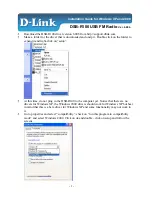
Smart Systems User’s Manual Version 1.1
80
Note that the maximum number of lines that can be collected in each direction is
100.
The calculation for determining an appropriate line spacing is complex. One has to
consider system frequency, target size and practical considerations. In general, the
Noggin 250 should have a line spacing of 0.5 metres or less, the Noggin 500 should
have a line spacing of 0.25 metres or less and the Noggin 1000 should have a line
spacing of 0.10 metres or less.
However, line spacing should really be determined by target size. In most cases the
system must pass over a target to detect it. Therefore, the line spacing needs to be on
the order of the size of the target or smaller, if practical. This can be adjusted to a larger
spacing for larger targets or targets with a linear extent. As well, these rules may have
to be bent for practical purposes like survey production rates. The fact is that a tighter
line spacing takes longer to collect and this may not be economically possible in all
circumstances.
6.3.5
GPS Parameters
The Global Positioning System (GPS) uses special satellites around the Earth to
determine the position of a GPS receiver located at any position on the surface of the
Earth. GPS receivers can be purchased from a number of manufacturers.
The DVL has a serial port on the back for attaching a GPS receiver. This port will
accommodate any GPS receiver that has a standard serial port output.
This feature allows GPS information to be logged while collecting Noggin
plus
data. The
GPS information may be useful for mapping where GPR surveys have been performed
(see Reading per Trace mode below) or determining where a specific target of interest is
located in GPS co-ordinates (see Fiducial Tagging mode below).
The DVL can be set up to read and log GPS information collected during data
acquisition with the Noggin
plus
system. GPS information can be logged in two different
ways: 1) for every trace collected by the Noggin
plus
system, or 2) every time the user
adds a fiducial to the data by pressing the A button (see Section 6.2.4 – Fiducial
Markers).
This feature provides a means of logging GPS information to an independent file.
Note
that the GPS information is NOT automatically integrated with the Noggin
plus
data.
After data acquisition is complete, the data can be downloaded to a PC and the
Win_EKKO_Pro software can be used to integrate the GPS data with the Noggin
plus
data.
In order for the DVL to read the GPS data string, the GPS settings for the specific GPS
receiver being used must be input into this menu. There are 4 important items that must
be specified correctly for the DVL to display the GPS strings. These items are Baud
Rate, Stop Bits, Data Bits and Parity. These are discussed in more detail below. The
default values listed below are the values that are typically used. Read the GPS
Receiver User’s Guide or experiment with the settings to find the correct ones.
Содержание 1000 Smart Cart
Страница 1: ...Users Manual Version 1 1 ...
Страница 2: ...Smart Systems User s Manual Version 1 1 ii ...
Страница 8: ...Smart Systems User s Manual Version 1 1 viii ...
Страница 14: ...Smart Systems User s Manual Version 1 1 xiv ...
Страница 23: ...Smart Systems User s Manual Version 1 1 9 Figure 2 11 Noggin 500 Smart Cart Figure 2 12 Noggin 1000 Smart Cart ...
















































